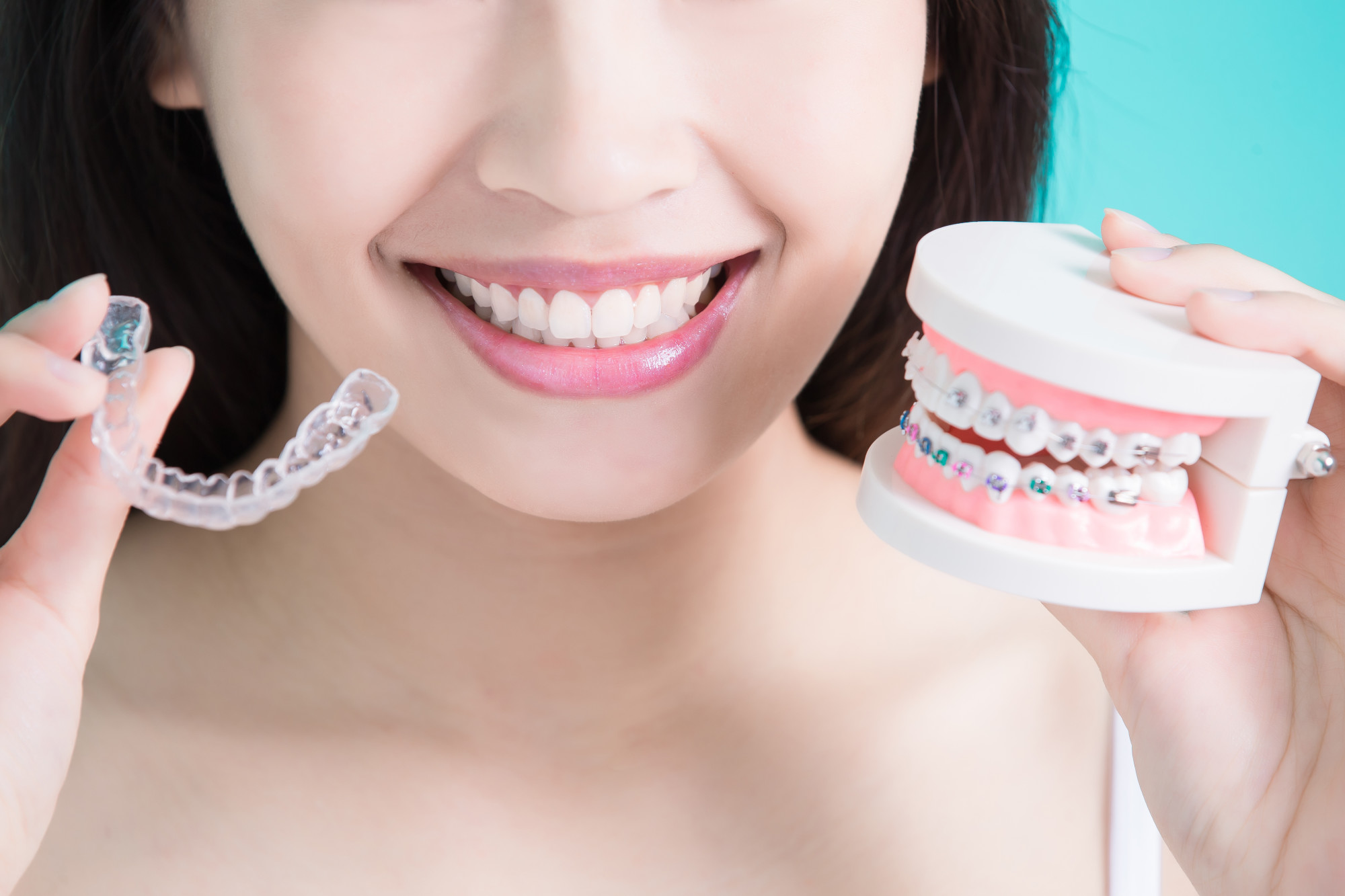
woman choicce different brace on green background
More than four million people in the US wear braces.
If you think that’s limited to kids, think again! A quarter of those individuals are adults.
So, if you’re someone considering teeth straightening options, you’re in a large pool. But braces aren’t necessarily the go-to anymore. Nowadays, people with misaligned teeth tend to ask, “Should I get braces or Invisalign?”
Invisalign is a popular alternative—but is it better or worse than traditional braces? Does it make a difference?
It does! Keep reading for the top considerations.
1. Your Budget
In general, Invisalign costs anywhere from $1,800 to $9,500, depending on the complexity of the treatment plan.
The average cost of Invisalign for a teenager is around $3,000. For adults, that number is $5,700.
On average, standard metal braces cost about $3,000 to $7,500. The American Dental Association lists the average price of orthodontic treatment as $5,000 to $6,000. More complex treatments could run you into the $10,000 range.
Still, braces look to be the more affordable and comprehensive option, but Invisalign could be a great alternative for those who require simpler solutions.
2. Appearance Preferences
The main difference between Invisalign and braces comes in appearance.
Braces are most often metal, but there are also ceramic options that are less noticeable. The brackets are either clear or the color of your teeth, making them less obvious. Of course, metal braces are the most noticeable of the group—but by no means abnormal!
When discussing the pros and cons of Invisalign, one of the main benefits comes in its minimalist, virtually undetectable look. A good candidate for Invisalign might be an adult who wants to better hide their braces.
3. The Maintenance
Both braces and Invisalign require maintenance.
People with braces need to brush and floss frequently to avoid food or plaque build-up. Mouthwashes and oral irrigators (aka water flossers) are particularly helpful during the cleaning process.
Additionally, you’ll need to visit your orthodontist every four to eight weeks for adjustments.
Invisalign wearers need to wear their trays for at least 22 hours a day. You can take them out to eat or brush your teeth, but they should otherwise be worn constantly.
Invisalign check-ups happen more often. You’ll receive new trays every one to two weeks.
4. Wear Time
You’re likely also wondering how long to wear braces vs. Invisalign.
The truth is, the answer to that question also depends on several factors, such as your age, the condition of your teeth, and the type of treatment you need.
In general, though, most people wear braces for one to three years, with some exceptions requiring more (or even less) time. Those who wear Invisalign typically do so for about a year, because Invisalign corrects milder issues than braces.
5. The Condition of Your Teeth
For more exhaustive treatment, you’ll need to consider braces.
Braces can help regardless of the crookedness of the teeth or the severity of jaw misalignment. Got an underbite, overbite, or deep bite? These are issues not easily solved with Invisalign.
The best Invisalign candidates have moderately crooked teeth that need simple straightening. Invisalign is much more than cosmetic dental work, but even still, can’t accomplish all the broad goals of braces.
“Should I Get Braces or Invisalign?” That Depends
Whether you decide to get one or the other depends on the factors listed above—things like budget, maintenance, appearance, and more.
So, the next time you ask yourself “Should I get braces or Invisalign?” know that the answer is contingent on your needs and lifestyle. If you’re still struggling to come up with an answer, consult with your dentist or orthodontist.
For more health and wellness advice on a wide range of topics, head back to our homepage!
Leave a Reply